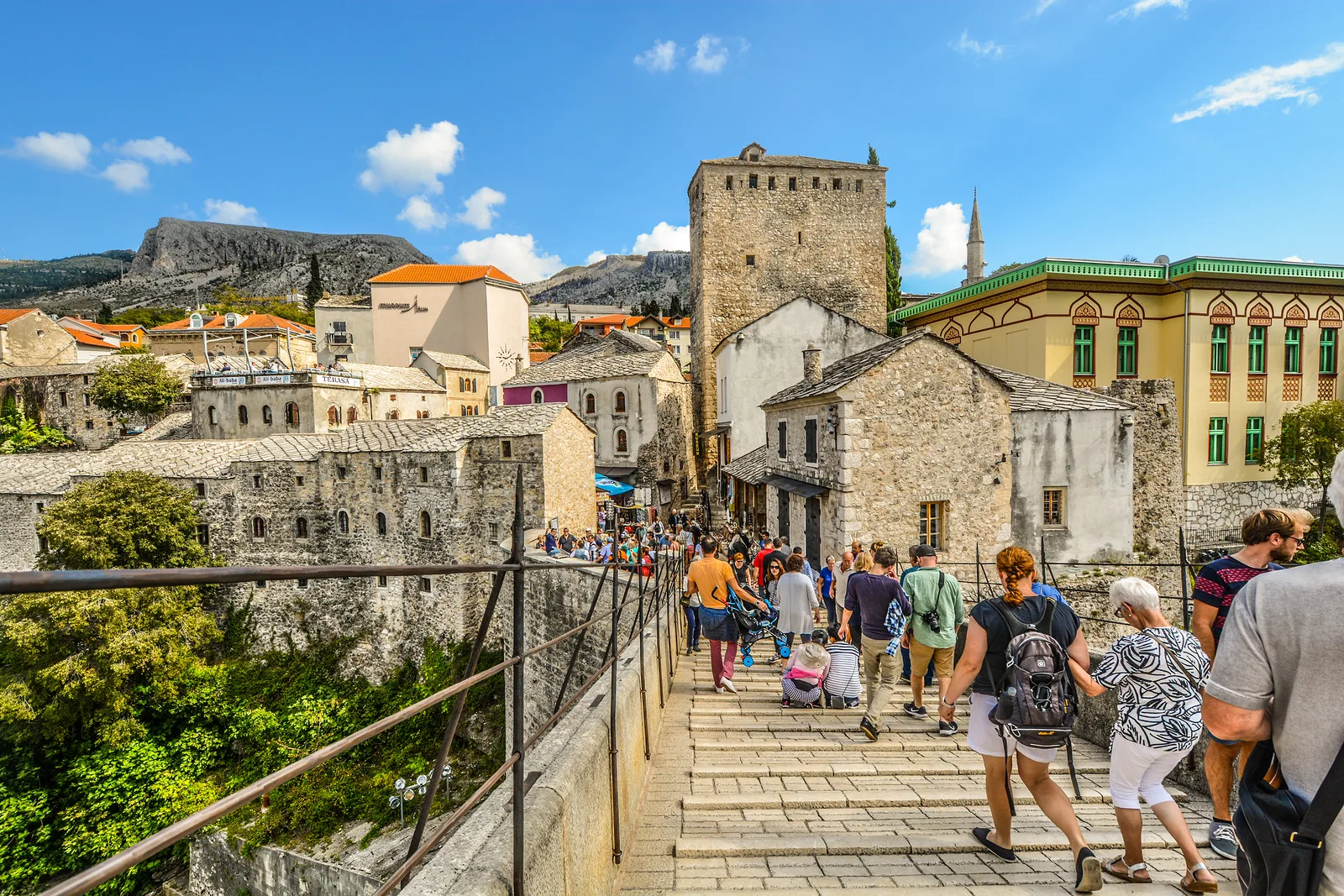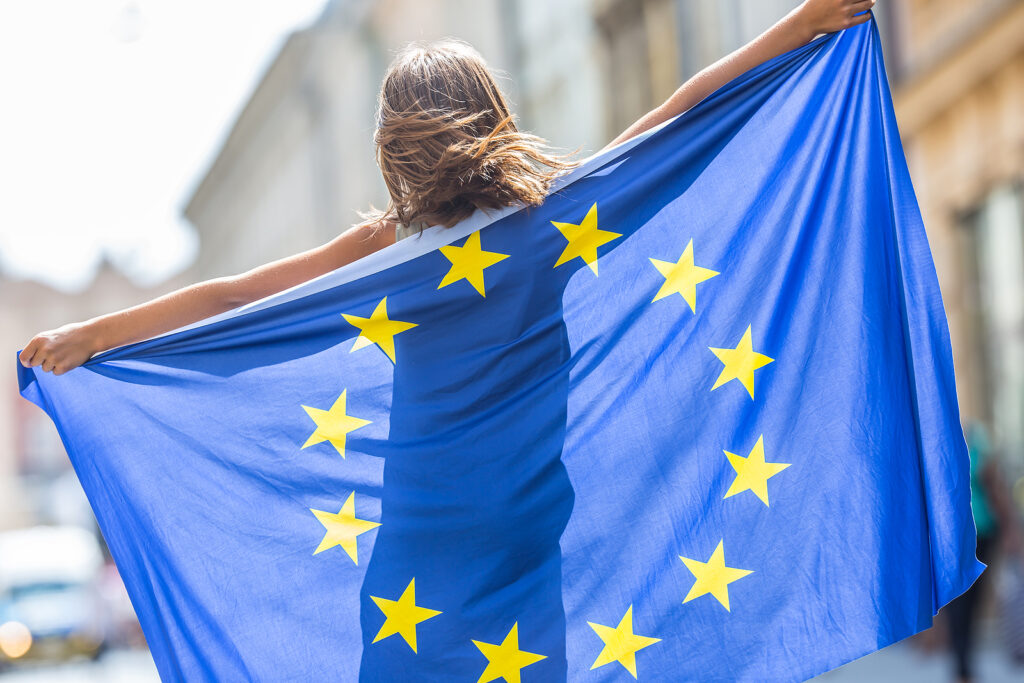It was the European Union’s largest ever expansion—the likes of which we will in all probability never see again. On May 1, 2004, ten countries (eight of which are in the emerging Europe region: Czechia, Estonia, Hungary, Latvia, Lithuania, Poland, Slovakia, Slovenia; the others were Cyprus and Malta) became members of the EU.
As a result of what was officially termed the fifth enlargement, the number of EU member states increased overnight from 15 to 25, the number of official languages from 11 to 21, while the bloc’s population increased by 75 million.
Part of the same wave of enlargement was the accession in 2007 of Bulgaria and Romania, who were unable to join in 2004 due to concerns over rule of law and corruption, but which, according to the European Commission, constitute part of the fifth enlargement.
Joining the EU held the implicit promise of economic convergence to standards of living that would soon be on a par with those in Western Europe.
Nearly two decades on, these expectations have largely been met, as the catching-up process which had gained impetus during accession talks was given a boost by actual membership. In 2022, GDP per capita in Estonia, Lithuania and Slovenia surpassed Spain. Poland overtook Portugal. All of the 2004 intake can now boast GDP per capita higher than Greece.
Though in some cases a gap in living standards and GDP remains—and a widening urban-rural divide provides much cause for concern across the region—access to the EU’s single market has created new business opportunities, triggered vast capital flows to the new member states and facilitated their integration into global supply chains.
The EU makes countries richer
By any measurement, the fifth enlargement has been an unqualified success. Perhaps the clearest example is Poland. A report by the Polish Economic Institute (PEI), a think tank, last year claimed that Poland’s GDP per capita—based on purchasing power parity (PPP)—is currently around 31 per cent higher than if it had not joined the EU.
To assess the impact of Poland’s participation in the European single market, the PEI created a counterfactual scenario looking at Poland’s GDP growth if the country had not joined the EU. It found that in 2021, Poland’s GDP per capita at PPP was 78 per cent of the EU average, compared to 40 per cent in 1990 and 50 per cent in 2004—when the country became an EU member.
Without EU membership and participation in the single market, Poland’s GDP per capita at PPP would be 60 per cent of that in the EU, says the PEI.
“If it were not part of the single market, Poland’s GDP per capita in 2021 would be at its 2014 level; EU membership has therefore boosted it by nearly 1.5 percentage points per year,” says Marek Wąsiński, head of the world economy team at the PEI.
Driving Poland’s economic success has been trade with other EU member states, made possible by the single market: since it joined the EU exports have been responsible for two-thirds of its economic growth. In 2021, Poland exported 216 billion euros worth of goods to the EU, or 75 per cent of all exports.
For some members of the fifth enlargement, such as Czechia and Slovakia, the percentage is even higher—more than 80 per cent of all exports go to other EU countries, according to Eurostat.
Brussels bashing
Even Hungary, led by the increasingly authoritarian and combative Viktor Orbán, locked in what appears to be eternal conflict with the EU over everything from support for Ukraine to rule of law concerns, exports close to 80 per cent of its output to other EU member states. Last year, Hungary managed to register a record amount of foreign direct investment (FDI)—in large part thanks to its figurative and literal location in the heart of the Europe.
Indeed, criss-crossed by an enormously impressive network of motorways (built almost entirely with grants and loans from the EU) that now measures longer than neighbouring Austria’s, Hungary has done exceedingly well out of EU membership.
According to the World Bank, the country’s GDP in 2003 (the last full year before EU membership) was just 85.28 billion US dollars. In 2023, Hungarian GDP topped 200 billion US dollars for the first time and is set to hit 300 million US dollars by 2030.
For all this, Orbán’s eurosceptic Fidesz party is likely to win the most votes when Hungarians head to the polls (along with the rest of Europe) in elections for the European Parliament in June.
Other eurosceptic parties across the region, from the far-right AUR in Romania to EKRE in Estonia, are also likely to do well. Despite the clear benefits of EU membership, Brussels-bashing is a vote winner amongst a considerable part of the continent’s electorate (and Western Europe, as rising support for the AfD in Germany and the National Rally in France demonstrate, is not exempt from the trend).
The fear of being left behind
That this should continue to be the case might in part be explained by a fear amongst the same demographic of being left behind.
Last year, a major study by the Vienna Institute for International Economic Studies (wiiw) warned that the previously successful model of taking over labour-intensive production steps as an ‘extended workbench’ of Western corporations had reached its limits in Central and Eastern Europe.
Combined with major structural changes such as decarbonisation and digitalisation, this means that a new, innovation-based economic model is necessary, the study argued.
“Only then will these states be able to catch up with Western Europe in terms of productivity and living standards,” says Zuzana Zavarská, an economist at the Vienna Institute and co-author of the study.
The basic problem, wiiw warns, is that the central technological skills and those parts of production with the highest value added are both located in the ‘headquarter economies’ of Western Europe. On the other hand, the EU members of Central and Eastern Europe continue to specialise in labour-intensive production. They stand and fall on low labour costs. This limits their prospects of fully catching up economically with Western Europe.
In recent years, populist politicians have cottoned on to this. In Romania, AUR’s message is based on the notion that the EU has turned Romania into a ‘colony’, good for its cheap workforce but little else. The country’s ongoing exclusion (along with Bulgaria) from one of the great benefits of EU membership, the passport-free Schengen travel zone, has done little to convince eurosceptics otherwise. While Romania and Bulgaria’s airports will be admitted to Schengen on March 31, land border checks (a literal and very costly barrier to free trade) will remain in place until 2025 at the earliest.
Brexit was a one-off
To counter the argument of the eurosceptics, the EU member states of emerging Europe would do well to take on board the recommendations made by wiiw in its report—the main finding of which is that the states of Central and Eastern Europe could learn from the experiences of the East Asian tiger economies.
Governments should think strategically about which sectors and parts of the value chain they would like to attract to the country. Incentives should also be created to maximise the transfer of knowledge and know-how from foreign corporations to domestic ones.
The Vienna Institute’s report also makes clear that structural change (from a low-cost, labour-intensive economy to an innovation-led society) must be cushioned socially, in order not to lose any more support of the population (or give eurosceptics more ammunition).
In order to facilitate the transition from old to new industries, the EU-CEE countries should follow the Scandinavian model of a flexible labour market combined with a strong welfare state.
It could also be argued that member states might sell the benefits of EU membership a little better. The 20th anniversary of the fifth enlargement is the perfect opportunity to do so.
Fortunately, few of even its fiercest critics within emerging Europe will actively campaign for a Hunexit, a Polexit, or a Roexit. The European Union may provide populist parties with a convenient scapegoat and may often feel the full brunt of their nationalist rhetoric, but no serious political party in the region wants to withdraw.
They know full well that a vast majority of ordinary citizens—so many of whom took to the streets in protest in 1989 and then again in celebration in 2004—would simply not stand for it.
Instead, the EU will remain a guarantor of prosperity in an uncertain world. That war-torn Ukraine has placed such importance on commencing EU accession negotiations (a status it was finally awarded, along with Moldova, in December 2023) is proof of the EU’s ongoing appeal—and should bring a few eurosceptics in Western Europe to their senses.
Ukraine and Moldova now join the countries of the Western Balkans in the EU’s waiting room. When, in 2034, we come to mark the passing of another 10 years since that historic 2004 enlargement, we will almost certainly find ourselves living in an EU that is larger still.
Brexit would have proven to have been a one-off.







